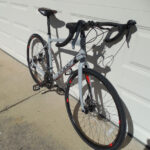Gravel bikes stand out in the cycling world for their incredible versatility. This category encompasses a wide spectrum of bikes, each designed for diverse riding experiences. From aerodynamic speed machines optimized for gravel races to robust steel-framed bikes equipped with mountain bike tires and suspension, the options are vast. The beauty of gravel bikes lies in this adaptability; you can perfectly tailor your bike to match your personal blend of on-road and off-road adventures. This inherent versatility makes them ideal not only for competitive racing and weekend explorations but also for practical uses like commuting, long-distance bikepacking and touring, tackling cyclocross races, or even enjoying smooth road riding.
So, how do you find the Good Gravel Bikes that are right for you? Whether you’re planning to conquer challenging routes like the King Alfred Way or participate in demanding events like the red dirt races of Kansas, we’re here to guide you to the perfect bike. Every gravel bike featured below has undergone rigorous testing by our team of expert reviewers, ensuring you get reliable recommendations.
If you’re new to cycling or exploring the gravel scene and find the bikes on this list a bit beyond your budget, be sure to check out our guide to the best budget gravel bikes for excellent options that won’t break the bank.
The Quick List: Top Good Gravel Bikes
 Giant Revolt Advanced Pro gravel bike 1. Giant Revolt Advanced Pro – Best Overall Gravel Bike
Giant Revolt Advanced Pro gravel bike 1. Giant Revolt Advanced Pro – Best Overall Gravel Bike
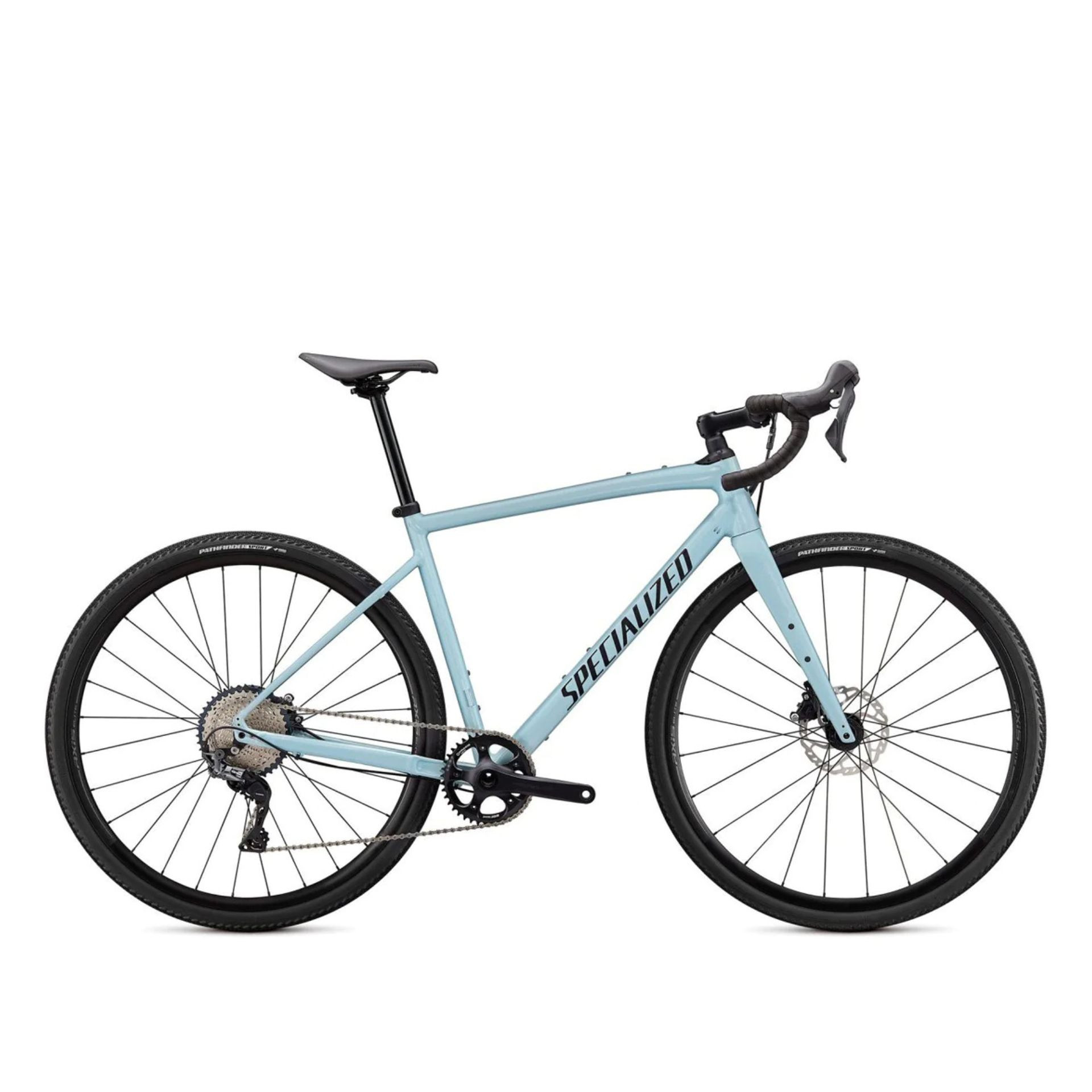 Specialized Diverge E5 Comp gravel bike 2. Specialized Diverge E5 – Most Versatile Gravel Bike
Specialized Diverge E5 Comp gravel bike 2. Specialized Diverge E5 – Most Versatile Gravel Bike
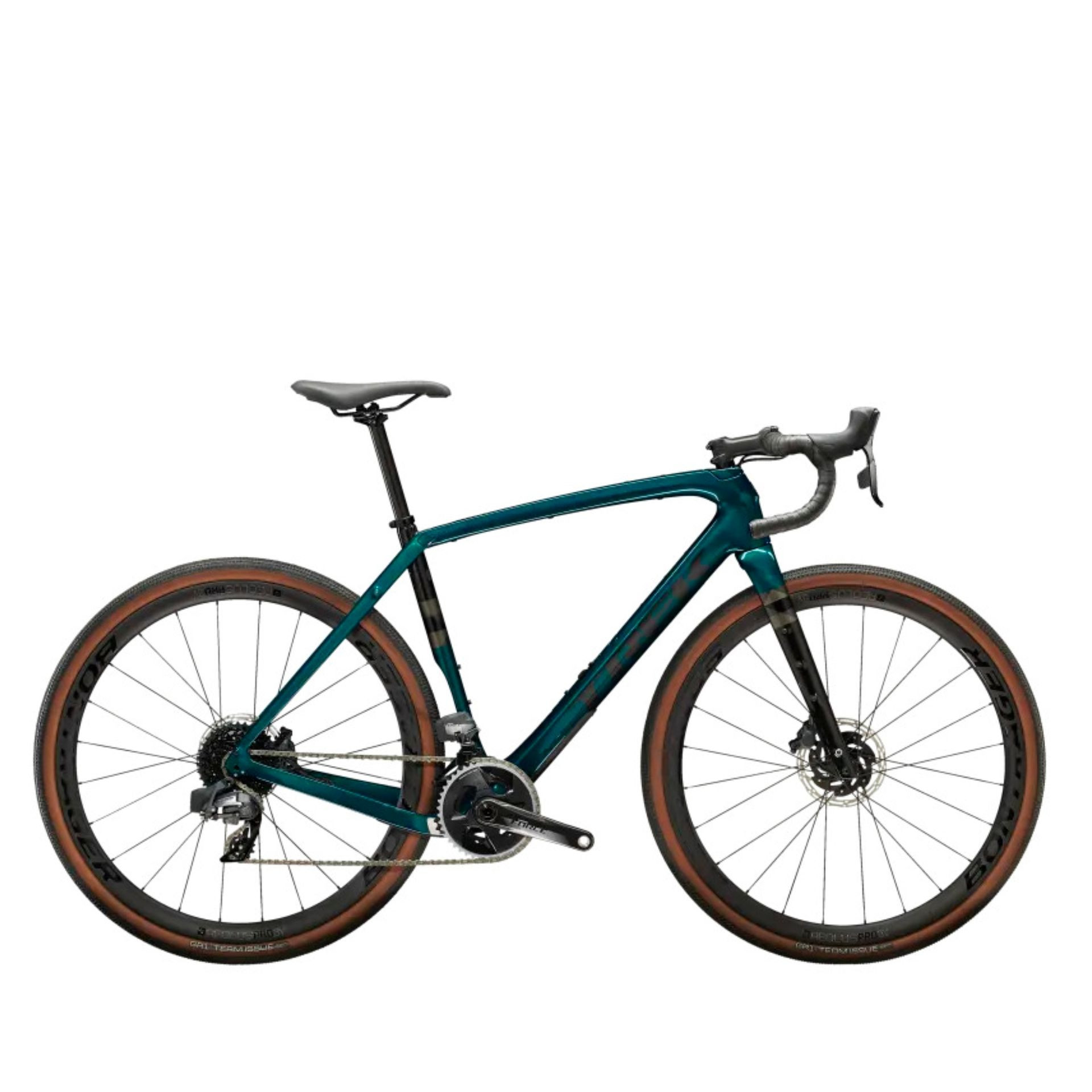 Trek Checkpoint SL7 gravel bike 3. Trek Checkpoint SL7 – Best Gravel Bike for Bikepacking
Trek Checkpoint SL7 gravel bike 3. Trek Checkpoint SL7 – Best Gravel Bike for Bikepacking
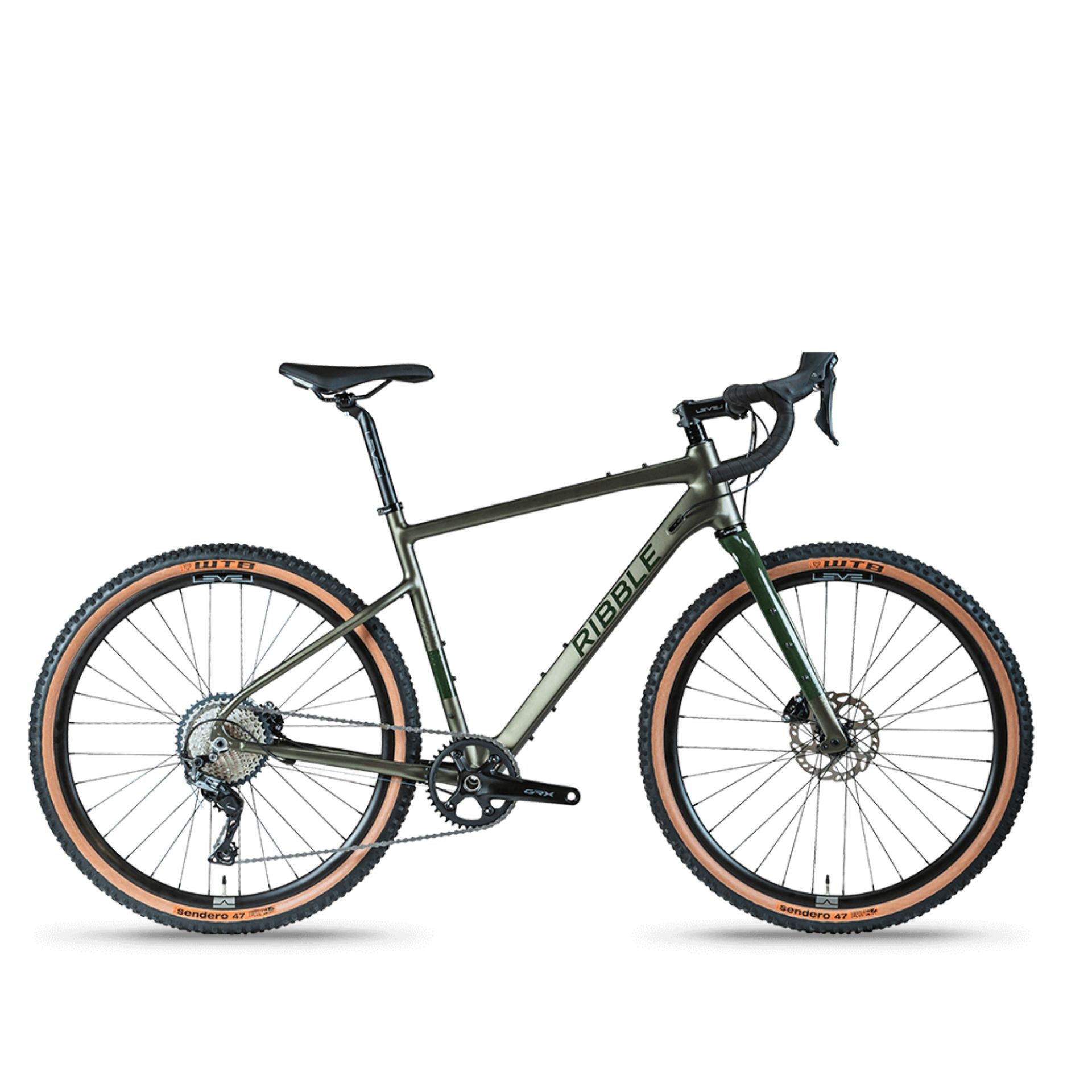 Ribble Gravel AL Sport 4. Ribble Gravel AL Sport – Best Gravel Bike for 650b Compatibility
Ribble Gravel AL Sport 4. Ribble Gravel AL Sport – Best Gravel Bike for 650b Compatibility
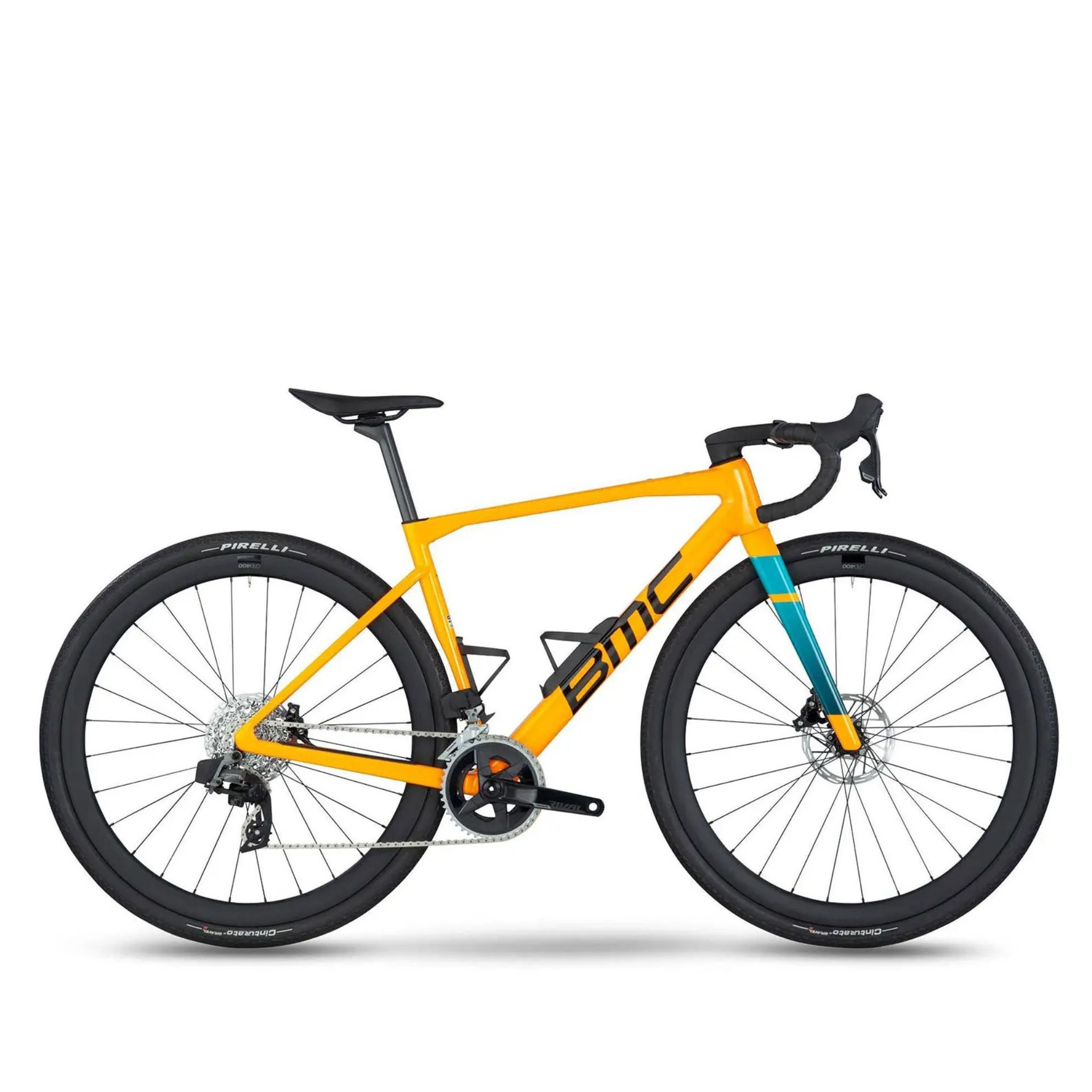 BMC Kaius 01 gravel bike 5. BMC Kaius 01 – Best Gravel Bike for Racing
BMC Kaius 01 gravel bike 5. BMC Kaius 01 – Best Gravel Bike for Racing
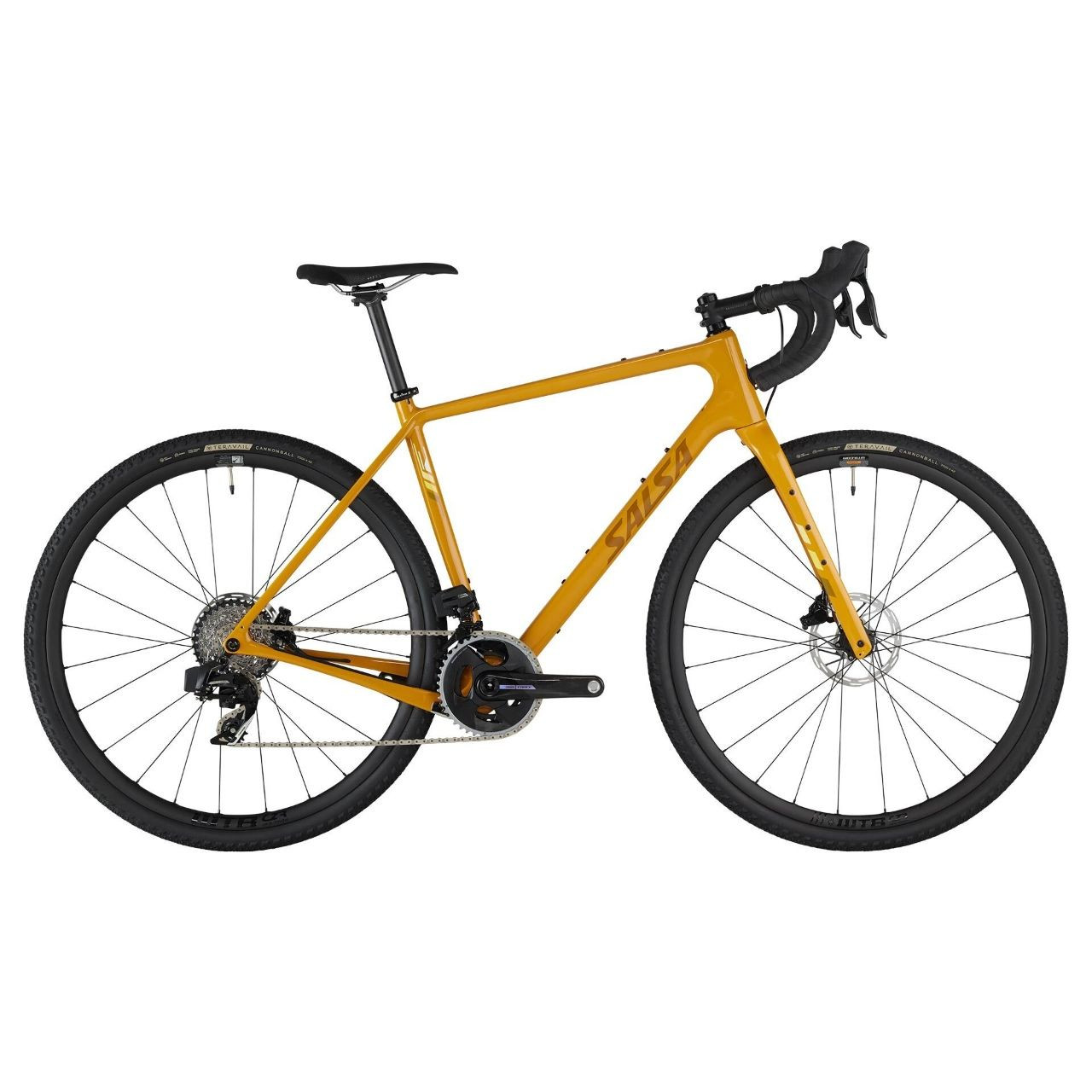 a yellow salsa warbird gravel bike fitted with sram force axs and carbon fibre wheels on a white studio background 6. Salsa Warbird C – Best Gravel Bike for Smooth Gravel
a yellow salsa warbird gravel bike fitted with sram force axs and carbon fibre wheels on a white studio background 6. Salsa Warbird C – Best Gravel Bike for Smooth Gravel
BEST GRAVEL BIKES 2024: Detailed Reviews
Best Overall Good Gravel Bike
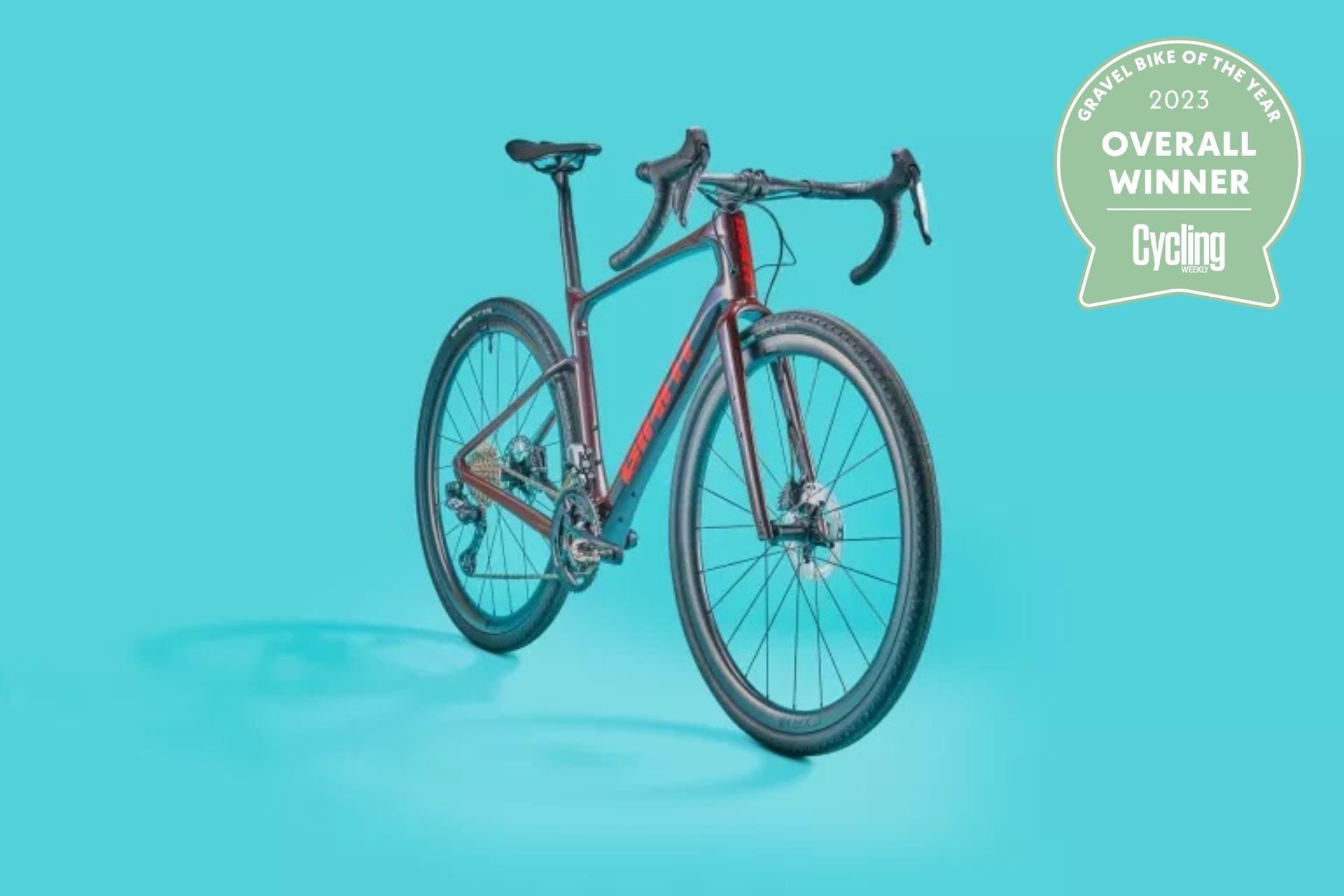 Giant Revolt gravel bike on a blue studio background shot in three quarter view
Giant Revolt gravel bike on a blue studio background shot in three quarter view
Image: The Giant Revolt, crowned Gravel Bike of the Year 2023, showcases its award-winning design.
1. Giant Revolt Advanced Pro: Gravel Bike of the Year
Overall Winner of our Gravel Bike of the Year award 2023
Read our Expert Review
The Giant Revolt Advanced Pro earned the title of Gravel Bike of the Year in 2023, and for good reason. It’s a truly exceptional gravel bike that excels across the diverse spectrum of gravel riding disciplines. Its design prioritizes rider comfort, featuring a D-shaped seatpost that offers a claimed 12mm of flex, significantly damping vibrations. The comfortable carbon frame further enhances this, ensuring a smooth ride even on rough terrains. Notably, the frame accommodates a standard 30.9mm round seat tube, offering the flexibility to install a dropper post for riders tackling more technical trails.
A standout feature is the two-position adjustable rear dropout. This ingenious design allows riders to fine-tune the bike’s geometry, choosing between a more agile setup ideal for racing or a wider wheelbase for enhanced stability and increased tire clearance. Practicality is also key, with ample mounting points for bikepacking gear, including on the fork legs, making it a versatile choice for adventure riding.
While the frame effectively absorbs bumps both at the front and rear, our testers noted that a shorter head tube would enhance the bike’s versatility by offering more adjustability in rider position. However, the overall package is incredibly compelling, especially considering the value it offers. The tested model boasts a high-end spec including Shimano GRX RX815 Di2 electronic shifting and Giant carbon wheels, components typically found on much pricier bikes.
Key Specifications:
- Frame: Advanced SL-Grade Composite carbon frame
- Fork: Advanced-Grade Composite carbon
- Groupset: Shimano GRX RX815 Di2 2x
- Wheels: Giant CXR 1 Carbon
- Tyres: Maxxis Receptor, 700x40c
- Weight: 8.3kg
Reasons to Buy:
- Superb comfort, both front and rear, minimizing fatigue on long rides.
- Adjustable geometry via flippable rear dropout, adapting to various terrains and riding styles.
- Generous 53mm maximum tire clearance, increasing capability on challenging surfaces.
Reasons to Avoid:
- High front end may limit ride position adjustability for riders seeking a more aggressive setup.
- Stock tires are best suited for dry conditions; may require swapping for wetter climates.
Who is this bike for? The Giant Revolt Advanced Pro is ideal for riders seeking a top-performing, versatile gravel bike that excels in a wide range of conditions. It’s a fantastic choice for gravel enthusiasts who appreciate comfort, adjustability, and high-value components.
Most Versatile Good Gravel Bike
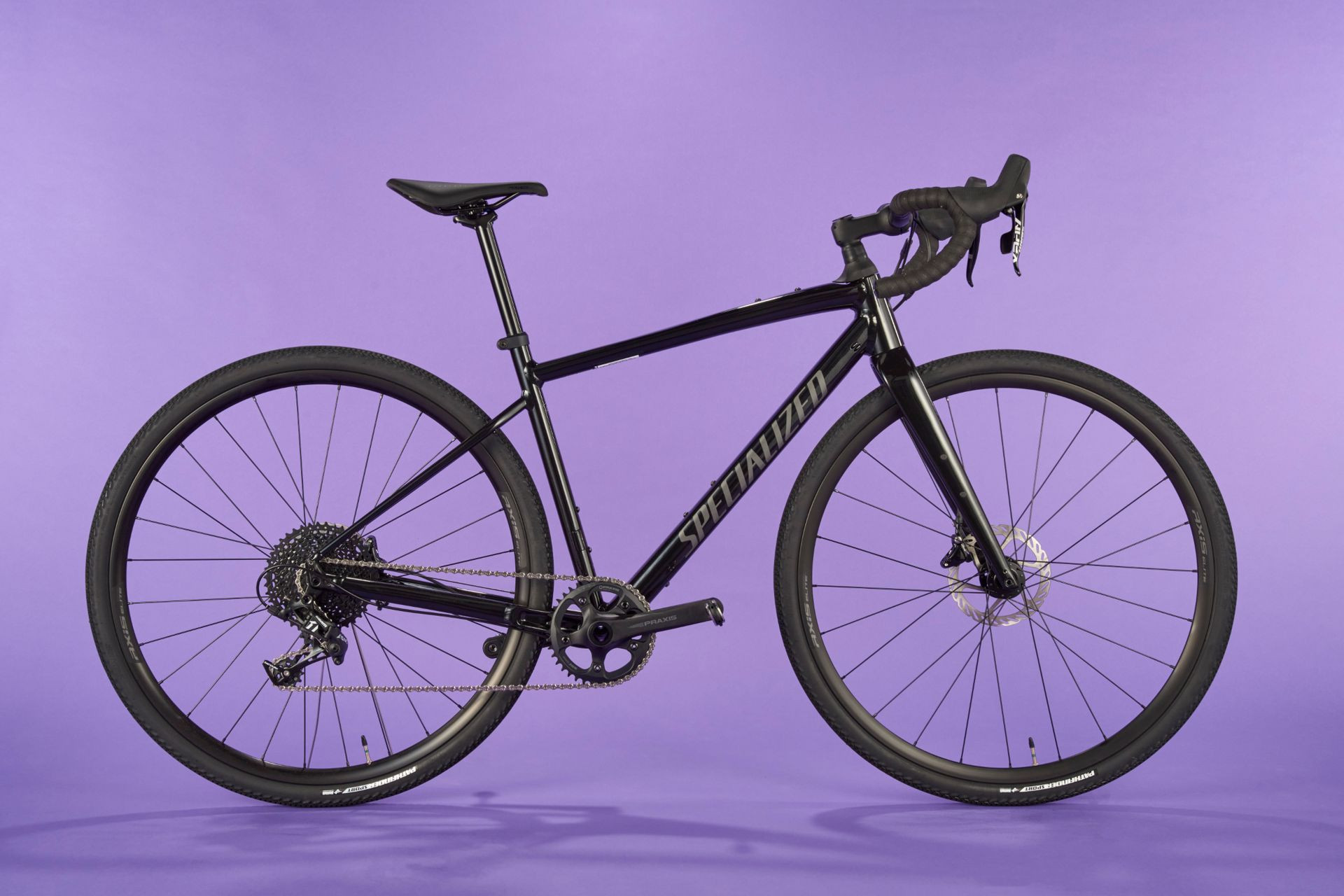 Specialized Diverge Comp Carbon which is one of the best gravel bikes
Specialized Diverge Comp Carbon which is one of the best gravel bikes
Image: The Specialized Diverge Comp E5, a true all-rounder, ready for any adventure.
2. Specialized Diverge Comp E5: The Adaptable Adventure Machine
Renowned for its versatility, making it a highly popular gravel bike.
Explore our Expert Review
If you prioritize adaptability and adventure in your gravel riding, the Specialized Diverge Comp E5 stands out as an exceptional choice. This bike is designed to handle a wide range of terrains and riding styles, from exploring new trails and embarking on all-day epics to tackling occasional multi-day bikepacking trips. Its versatility is a key reason why it’s considered among the good gravel bikes for riders who want one bike to do it all.
The Diverge E5 features a relaxed geometry coupled with a high front end, promoting a more upright and comfortable riding position, especially beneficial for long days in the saddle. While this geometry enhances comfort, it’s worth noting that some testers found it slightly challenging to weight the front tire sufficiently when cornering aggressively at high speeds.
For adventure preparedness, the Diverge E5 is equipped with a comprehensive array of mounts. It includes pairs of mounts under the down tube and on top of the top tube, as well as triple bosses on the fork legs. Furthermore, it’s fully compatible with fenders and a pannier rack, catering to riders who prefer a more traditional setup for carrying luggage and protection from the elements.
A standout feature, typically found on higher-end carbon models, is the Future Shock 1.5. This innovative system effectively damps out trail chatter and high-frequency bumps, significantly improving front-end comfort. While it provides excellent vibration damping, it’s important to note that it is not designed to replace a full front suspension system for extremely rough terrain.
Key Specifications:
- Frame: E5 alloy
- Fork: Specialized Future Shock 1.5
- Groupset: SRAM Apex 1×11
- Wheels: AXIS Elite Disc
- Tyres: Specialized Pathfinder Sport 38c (Max clearance: 700x47c or 650b x 53 (2.1”))
- Weight: 10.1kg
Reasons to Buy:
- Exceptional adaptability across various gravel riding styles and terrains.
- Future Shock 1.5 technology provides superior front-end comfort and compliance, reducing fatigue.
Reasons to Avoid:
- Stock tires may compromise off-road capability in more technical or muddy conditions.
- Geometry might not be aggressive enough for riders seeking a race-oriented gravel bike.
Who is this bike for? The Specialized Diverge Comp E5 is perfect for riders who value versatility above all else. It’s an excellent choice for those who want a good gravel bike capable of handling everything from smooth gravel paths to adventurous bikepacking trips, with a focus on comfort and practicality.
Best Good Gravel Bike for Bikepacking
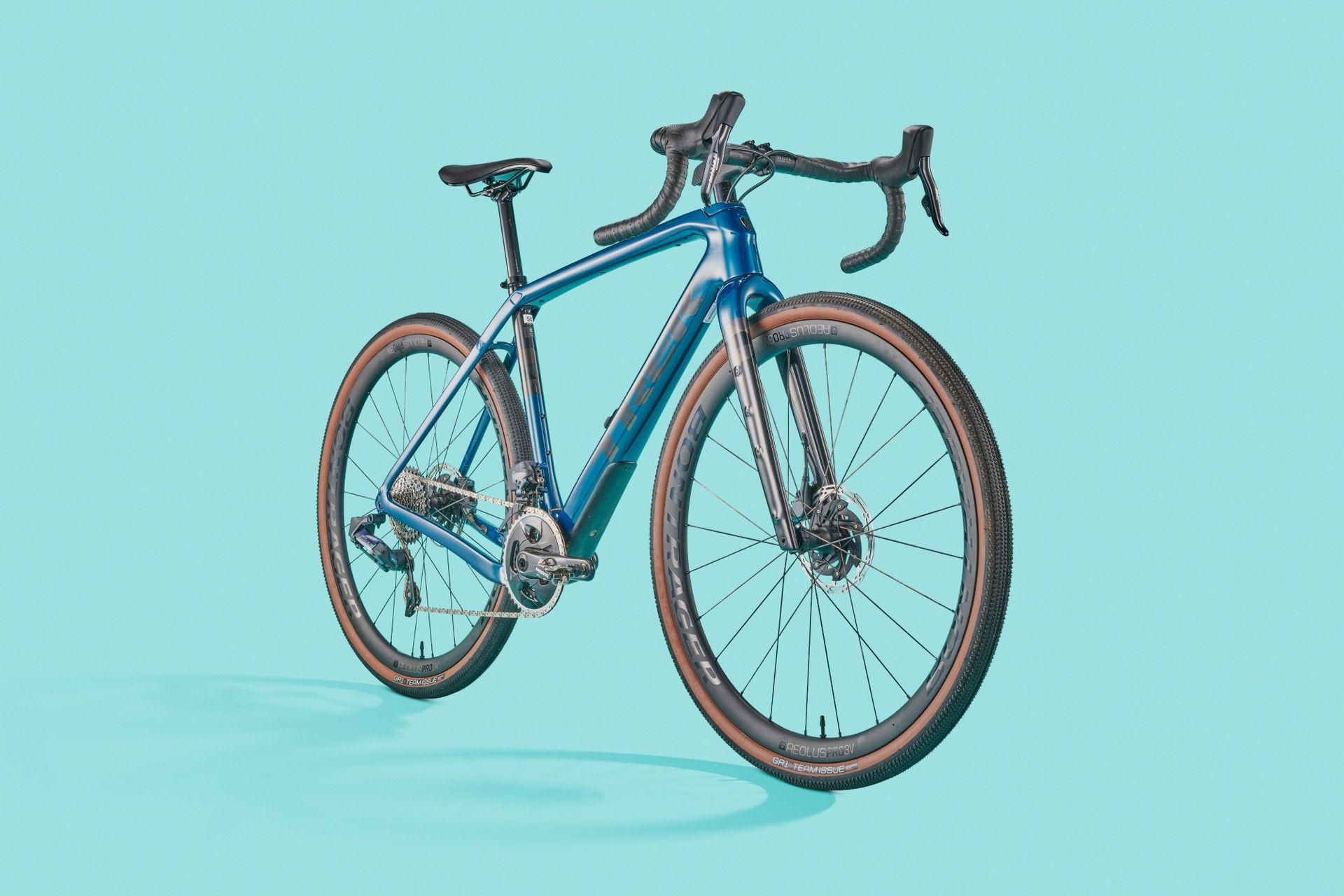 Trek Checkpoint SL7 gravel bike on a blue background
Trek Checkpoint SL7 gravel bike on a blue background
Image: The Trek Checkpoint SL7, ready for long-distance adventures and bikepacking expeditions.
3. Trek Checkpoint SL7: The Bikepacking Champion
Stability and comfort make the Trek Checkpoint SL7 an ideal companion for bikepacking and adventure.
Dive into our Expert Review
For riders prioritizing long-distance adventures and bikepacking epics, the Trek Checkpoint SL7 emerges as a top contender. This bike is meticulously designed for multi-day expeditions, boasting exceptional stability, comfort, and ample carrying capacity, making it one of the good gravel bikes specifically tailored for bikepacking.
The Checkpoint SL7 truly shines when it comes to mounts. It features mounts on the fork legs, allowing for front panniers or accessory cages, as well as Trek’s integrated down tube storage cubbyhole, perfect for stashing tools and spare tubes. The frame is designed to accommodate both 700c and 650b wheels, with clearance for up to 2.1″ 650b tires, further enhancing its off-road capabilities. Trek’s IsoSpeed seat tube decoupler is another key feature, providing added vertical compliance and significantly increasing comfort when spending long hours in the saddle.
Testers praised the Checkpoint’s long wheelbase and high fork trail, which contribute to its remarkable stability, particularly beneficial when loaded with bikepacking gear. Despite its focus on stability and carrying capacity, the Checkpoint remains surprisingly agile and enjoyable to ride even when stripped down for shorter, unladen rides.
Long-term testing confirmed that the Checkpoint SL7 excels at crushing long-distance rides. Its reassuring handling, comfortable ride quality, and thoughtfully selected components make it a dependable and enjoyable companion for any bikepacking adventure.
Key Specifications:
- Frame: 500 Series OCLV Carbon
- Fork: Checkpoint Carbon
- Groupset: Shimano GRX 2x
- Wheels: WTB ST i23 TCS
- Tyres: Vittoria Terreno Dry 700x38c
- Weight: 9.2kg
Reasons to Buy:
- Extensive number of mounts and impressive carrying capacity, ideal for bikepacking and touring.
- Wide tire clearance and long wheelbase provide enhanced stability on varied terrains.
- IsoSpeed seatpost decoupler significantly increases comfort for long days in the saddle.
Reasons to Avoid:
- Positioned at a higher price point compared to some other gravel bikes in its category.
Who is this bike for? The Trek Checkpoint SL7 is the ultimate choice for adventure cyclists and bikepackers. If you’re looking for a good gravel bike that can confidently handle multi-day expeditions, rough terrains, and heavy loads while providing superior comfort and stability, the Checkpoint SL7 is your ideal partner.
Best Good Gravel Bike for 650b Compatibility
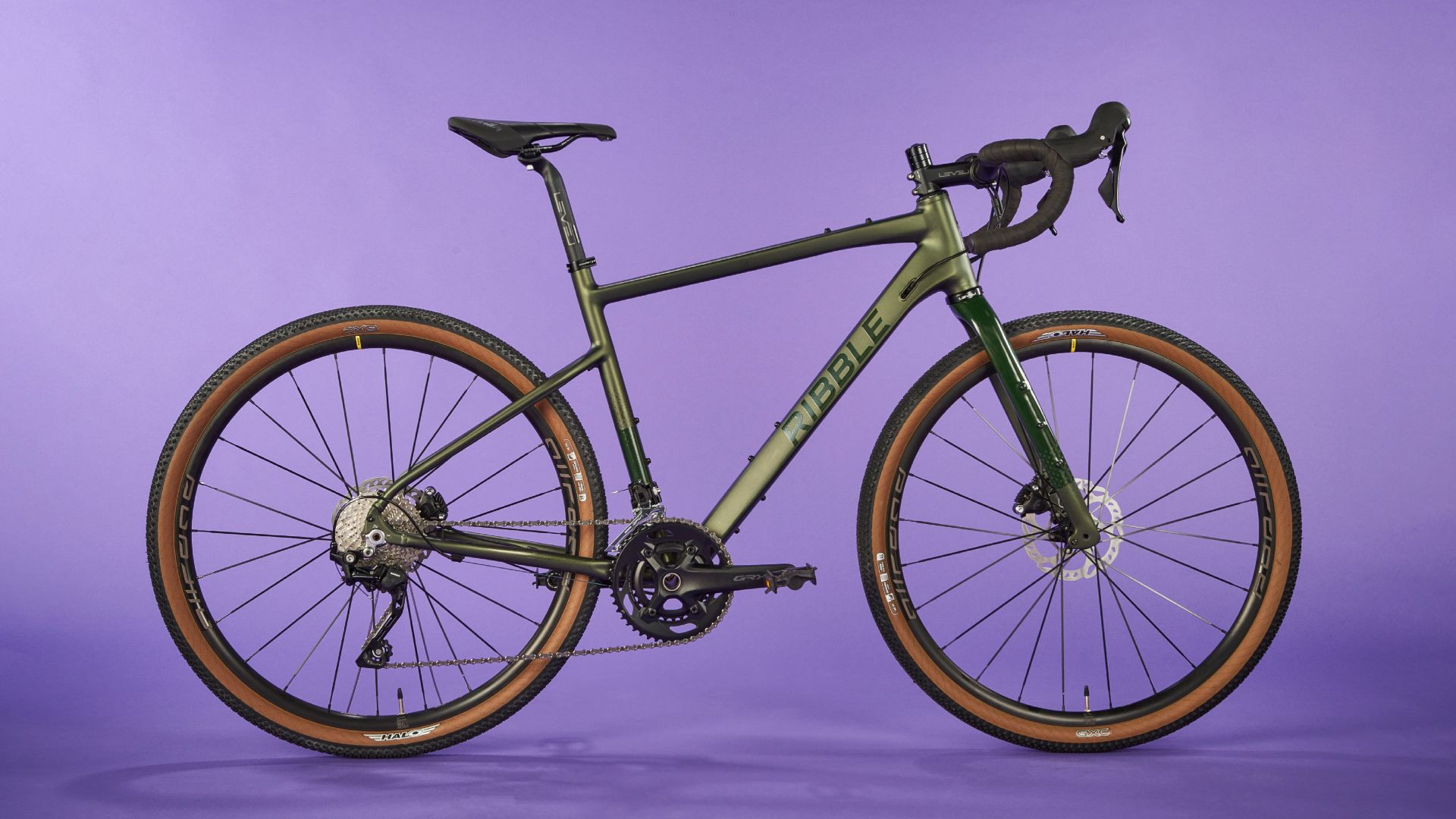 Ribble Gravel AL Sport which is one of the best gravel bikes under £2000
Ribble Gravel AL Sport which is one of the best gravel bikes under £2000
Image: The Ribble Gravel AL Sport, versatile with both 700c and 650b wheel options, showcasing its robust build.
4. Ribble Gravel AL Sport: 650b Ready for Tough Trails
Offers stock wheel size options for both 700c and 650b, catering to diverse riding preferences.
Read our Expert Review
The Ribble Gravel AL Sport stands out for its adaptability, particularly its compatibility with both 700c and 650b wheels. This feature makes it an exceptional choice for riders who tackle varied terrains, especially tougher trails where 650b wheels and wider tires excel. Its versatility and robust build make it a strong contender among good gravel bikes for adventurous riders.
The Gravel AL Sport comes stock with 47mm tires on 650b wheels, though the 700c option is also available. Opting for 650b wheels transforms this bike into a highly capable go-anywhere machine without breaking the bank, offering excellent value for its performance.
The alloy frame features a long and low geometry, characterized by a slack headtube, a longer reach, and a short stem. This combination results in a stable and capable ride, especially off-road. While it boasts numerous mounting points for accessories, it surprisingly lacks rack mounts, which might be a consideration for some riders. The bike is equipped with a Shimano GRX 400 2×10-speed groupset, the entry-level option in the GRX range, yet it delivers reliable performance and a wide gear range, including a 30x34t low gear for tackling steep and challenging terrain.
Despite not being the lightest bike, testers found the Gravel AL Sport to feel surprisingly quick and responsive. It performs admirably on both degraded tarmac and rough tracks, although grip can diminish in muddier conditions.
Key Specifications:
- Frame: Ribble Gravel AL
- Fork: Gravel AL carbon
- Groupset: Shimano GRX RX400 2x
- Wheels: Mavic Allroad
- Tyres: WTB Sendero 650b x 47mm
- Weight: 10.9kg
Reasons to Buy:
- Comfortable ride quality, enhanced by wide 650b tires, absorbing bumps and vibrations effectively.
- Excellent grip in most conditions, providing confidence on varied surfaces.
- Exceptional value for money, offering high performance at a competitive price point.
Reasons to Avoid:
- Lacks rack mounts, limiting its suitability for traditional touring or commuting setups.
- Relatively long reach may not suit riders with shorter torsos.
Who is this bike for? The Ribble Gravel AL Sport is ideal for riders seeking a versatile and affordable gravel bike that excels on tougher trails. It’s a good gravel bike for those who appreciate the benefits of 650b wheels for off-road capability and comfort, without sacrificing performance on mixed terrains.
Best Good Gravel Bike for Gravel Racing
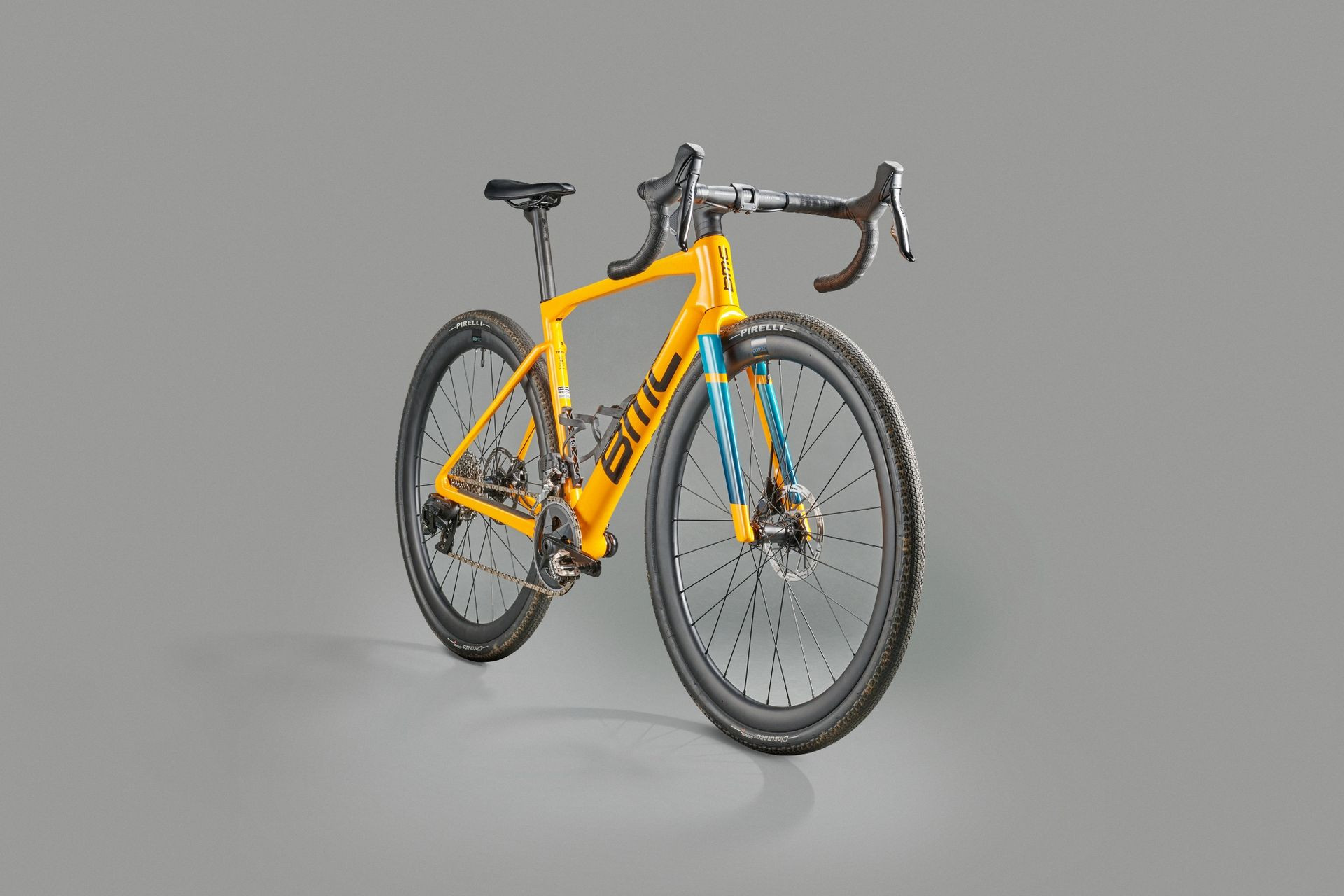 BMC Kaius 01 gravel bike on a grey background
BMC Kaius 01 gravel bike on a grey background
Image: The BMC Kaius 01, engineered for speed and performance, a true gravel racing machine.
5. BMC Kaius 01: The Gravel Racing Specialist
Uncompromisingly designed for speed, the BMC Kaius 01 is a race-focused gravel bike.
Explore our Expert Review
At the opposite end of the gravel spectrum from bikes like the Trek Checkpoint, the BMC Kaius 01 is purpose-built for gravel racing. This bike prioritizes speed and efficiency, featuring an aerodynamic frame and an aggressive, low riding position inspired by BMC’s Teammachine road race bike. If your focus is on competitive gravel riding, the Kaius 01 is among the good gravel bikes specifically designed for speed.
The Kaius 01 offers a ride feel reminiscent of BMC’s road bikes, emphasizing stiffness and responsiveness. Mounting points are deliberately limited to maintain its race-focused design, even omitting fender or mudguard bosses. However, it still provides clearance for up to 44mm tires, which helps to mitigate the inherent stiffness of the race-tuned frame and adds a degree of comfort.
Testers were impressed by the Kaius’s nimble handling, attributed to its short wheelbase and low bottom bracket. This combination delivers snappy, precise handling and exceptional speed, making it ideal for fast-paced gravel races and competitive riding.
While this specific model features a more affordable SRAM Rival AXS Wide 2x groupset, making it more accessible than the top-tier Kaius models, it remains a premium offering. It’s worth noting that even this lower-spec version is priced higher than the top-spec Giant Revolt, reflecting its high-performance, race-oriented design.
Key Specifications:
- Frame: Kaius 01 Premium Carbon
- Fork: Kaius 01 Premium Carbon
- Groupset: SRAM Rival AXS Wide 2x
- Wheels: BMC CRD-400 carbon
- Tyres: Pirelli Cinturato Gravel H – 40mm
- Weight: 8.9kg
Reasons to Buy:
- Incredibly fast and responsive handling, ideal for competitive gravel racing.
- Road bike-like ride quality, providing efficiency and speed on gravel surfaces.
Reasons to Avoid:
- Less comfortable compared to more endurance-oriented gravel bikes.
- Lacks fender or mudguard mounts, limiting its versatility for everyday riding or wet conditions.
Who is this bike for? The BMC Kaius 01 is designed for gravel racers and speed enthusiasts. If you’re seeking a good gravel bike engineered for top speed, agile handling, and race-day performance, and comfort and versatility are secondary, the Kaius 01 is an excellent choice.
Best Good Gravel Bike for Smooth American Style Gravel
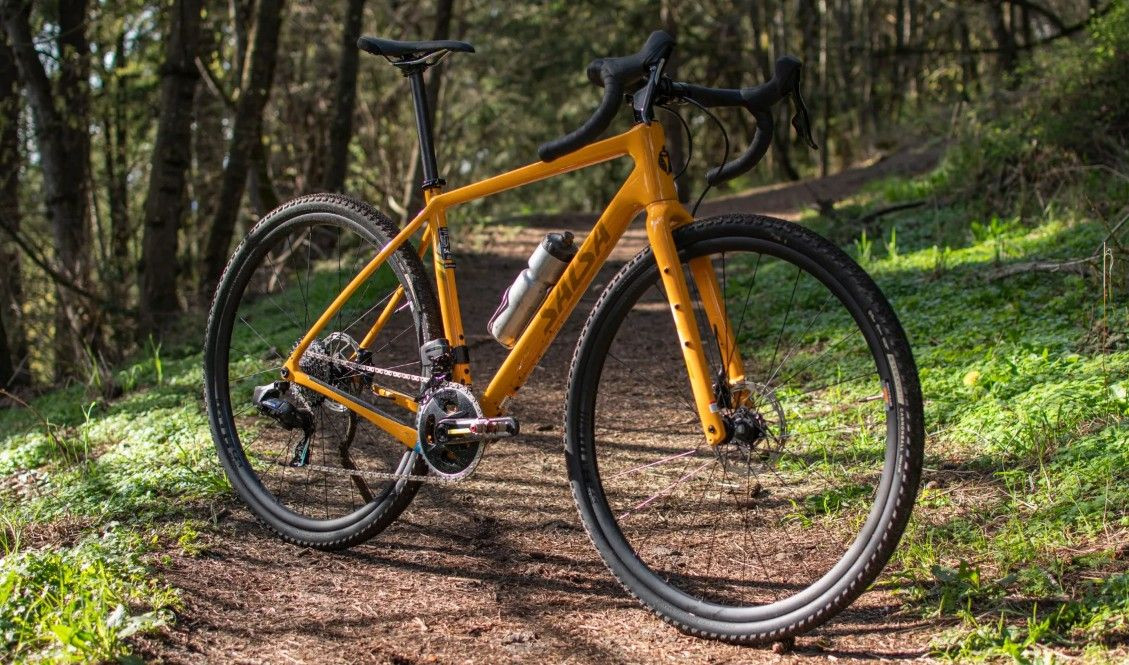 yellow salsa warbird gravel bike sat at an angle on a compact woodland track in a quiet wooded area
yellow salsa warbird gravel bike sat at an angle on a compact woodland track in a quiet wooded area
Image: The Salsa Warbird C, a gravel riding pioneer, navigating a woodland trail with ease.
6. Salsa Warbird C: The Original Gravel Grinder
Seamlessly transitions from road to dirt, making it a classic choice for gravel enthusiasts.
Read our Expert Review
The Salsa Warbird C holds a significant place in gravel biking history as one of the original gravel bikes. Launched in 2012, it pioneered the modern gravel bike concept, inspired by the early adoption of disc brakes in cyclocross. Now in its 4th generation, the Warbird remains true to its roots, focusing on simplicity and performance, making it a benchmark for good gravel bikes.
Despite being last updated in 2019, making it somewhat older than its competitors, the Warbird retains a refreshing simplicity in a market increasingly focused on aerodynamics and complex compliance technologies. Salsa has opted for a more traditional approach, allowing the frame’s inherent design to speak for itself. Testers found the Warbird to be far from slow, seamlessly transitioning from tarmac to gravel and gliding over rougher sections with remarkable ease, as long as the terrain doesn’t become excessively challenging.
The Warbird C frame-only option presents exceptional value, allowing riders to customize components to enhance performance based on their specific needs and budget. In a previous review, testers built up a Warbird with a SRAM Apex AXS groupset, Hunt 40 CGR Carbon wheels, and an Ergon Allroad Carbon Post, demonstrating its potential for both speed and comfort when equipped with carefully chosen components.
Key Specifications:
- Frame: Class 5™ VRS-equipped high-modulus carbon fiber
- Fork: Salsa Waxwing Deluxe
- Groupset: Sram Force eTap AXS
- Wheels: WTB CZR i23 carbon rim on DT Swiss 370 hubs
- Tyres: Teravail Cannonball 700c x 42mm, Durable casing, tubeless-ready
- Weight: 9.1kg
Reasons to Buy:
- Comfortable for long distances, effectively absorbing vibrations and bumps.
- Compatible with both 700c and 650b wheels, offering versatility for different terrains.
- Ample luggage mounting points, increasing its practicality for adventure riding.
- Frame-only option provides excellent value and customization potential.
Reasons to Avoid:
- Stock specification pricing can be on the higher side.
- Uses a press-fit bottom bracket, which some riders prefer to avoid.
- 42mm tire clearance is narrower compared to some modern gravel bike standards.
Who is this bike for? The Salsa Warbird C is ideal for riders who appreciate the heritage and simplicity of classic gravel bike design. It’s a good gravel bike for those who primarily ride smoother gravel roads and want a comfortable, reliable, and customizable platform that seamlessly blends on and off-road performance.
Best All-Round Performance Good Gravel Bike
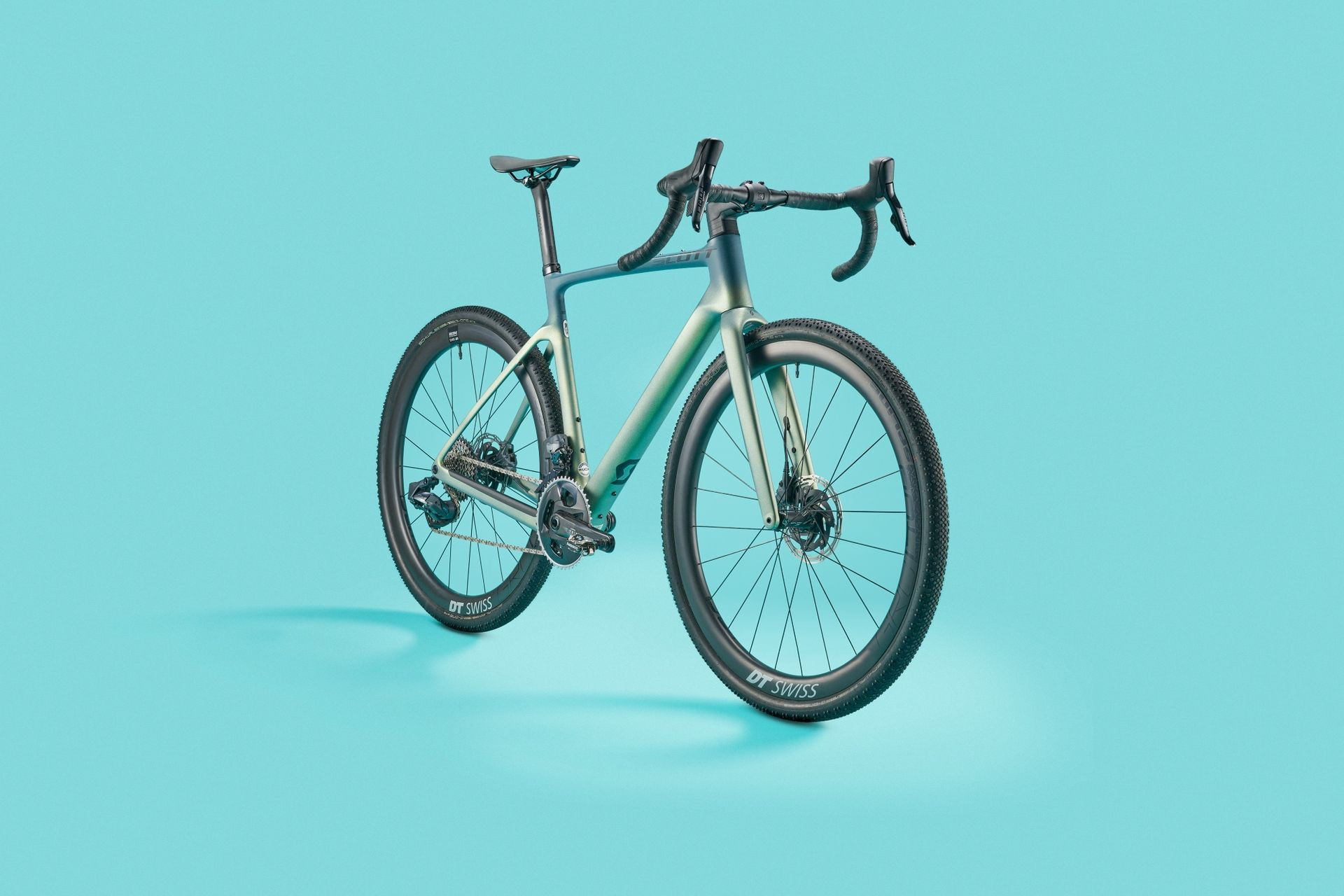 Scott Addict Gravel bike on a blue background
Scott Addict Gravel bike on a blue background
Image: The Scott Addict Gravel 10, a well-rounded performer, excelling in both speed and versatility.
7. Scott Addict Gravel 10: The Balanced Performer
A great all-round performance gravel bike, striking a balance between speed and versatility.
Explore our Expert Review in our Gravel Bike of the Year Coverage
The Scott Addict Gravel 10 is designed to be a versatile performer, leaning towards speed while still offering commendable off-road capabilities. It’s not solely focused on load-lugging like some adventure bikes, but it provides a longer wheelbase and higher stack compared to pure gravel race bikes like the BMC Kaius. This balanced approach makes it a good gravel bike for riders who want a blend of speed, comfort, and versatility.
The Addict Gravel achieves a well-balanced ride that performs admirably in fast, technical riding scenarios as well as multi-day bikepacking trips, despite lacking fork leg mounts. This versatility stems from its geometry and design, which strike a sweet spot between aggressive race bikes and more relaxed adventure models.
Testers particularly praised Scott’s striking paint job on the Addict Gravel, adding to its aesthetic appeal. Furthermore, the bike offers good value for its specification, with the lower-spec SRAM Rival AXS equipped model being competitively priced against brands typically known for their value-oriented offerings.
Key Specifications:
- Frame: Addict Gravel Disc HMF Carbon
- Fork: Addict Gravel HMF Carbon
- Groupset: SRAM Force AXS 2x
- Wheels: DT Swiss GRC1400 Disc
- Tyres: Schwalbe G-One Bite Performance 45mm
- Weight: 8.7kg
Reasons to Buy:
- Middle-of-the-road ride position offers a balance of comfort and performance.
- Good value for the components and overall specification.
- Visually appealing with a superb paint finish.
Reasons to Avoid:
- Lacks fork mounts, limiting front pannier or accessory carrying options.
Who is this bike for? The Scott Addict Gravel 10 is ideal for riders who want a versatile and high-performing gravel bike that excels in a variety of conditions. It’s a good gravel bike for those seeking a balance between speed for faster riding and comfort for longer adventures, without needing extensive bikepacking-specific features.
Most Composed Good Gravel Bike
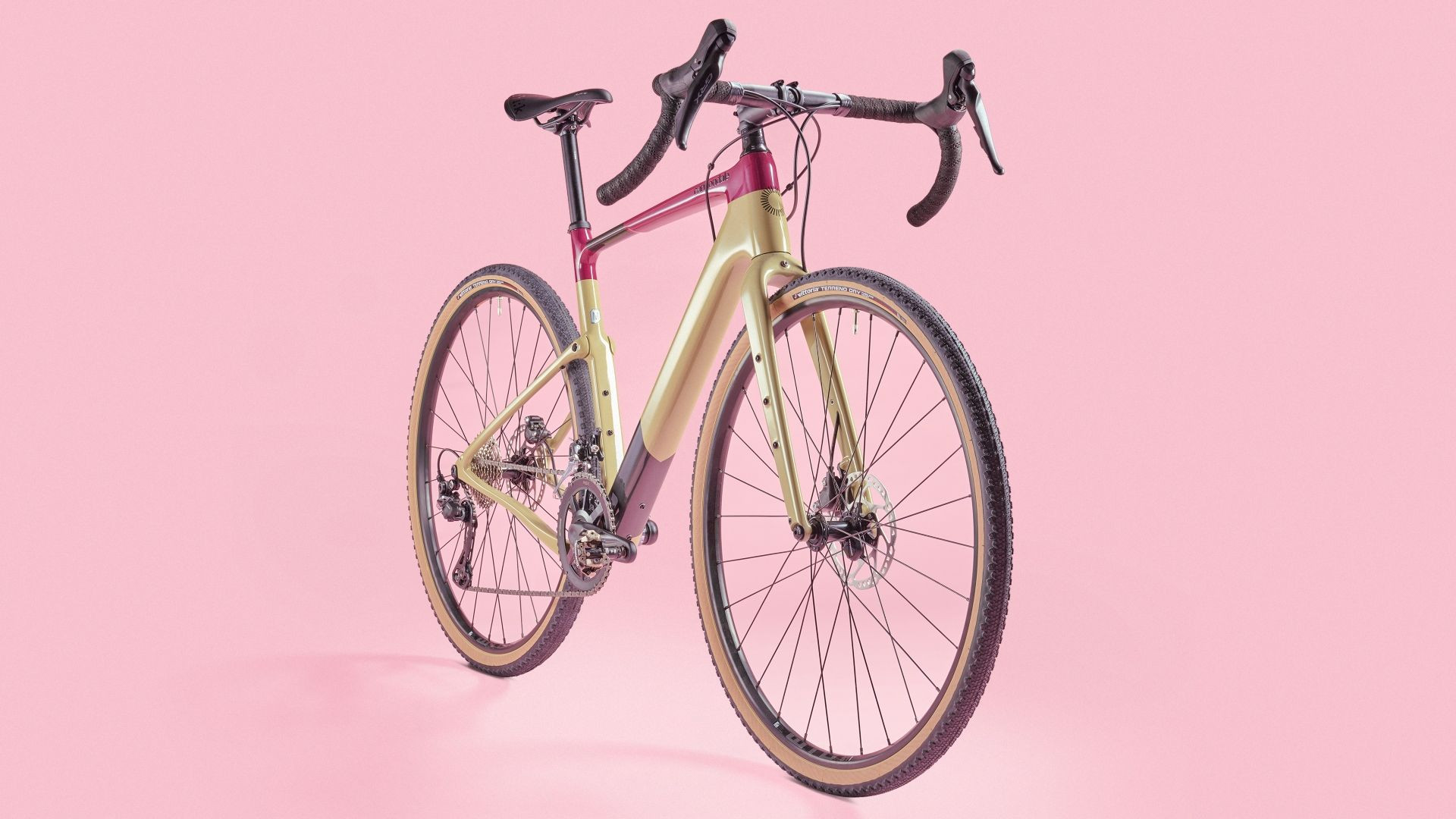 Cannondale Topstone carbon three on pink background
Cannondale Topstone carbon three on pink background
Image: The Cannondale Topstone Carbon 3, featuring Kingpin suspension, poised for a comfortable and controlled ride.
8. Cannondale Topstone Carbon 3: The Smooth Operator
Offers the most composed rear end in its class, with options to upgrade to full suspension.
Read our Expert Review
The Cannondale Topstone Carbon 3 is engineered for exceptional composure and comfort, particularly in its rear end, thanks to Cannondale’s Kingpin suspension system. While its geometry might appear aggressive on paper, it delivers a surprisingly forgiving ride. The Kingpin rear suspension provides 30mm of travel through a pivotless design, significantly enhancing rear-wheel traction on rougher terrains. For riders prioritizing comfort and control, especially on challenging surfaces, the Topstone Carbon 3 is a good gravel bike to consider.
While the Kingpin system excels at rear-end compliance, it doesn’t extend to the front. For enhanced front-end comfort, Cannondale offers the Topstone Carbon Lefty model, equipped with a suspension fork.
The Topstone Carbon 3 also offers the option to integrate Cannondale’s Smart Sense lighting system, including a rearview radar for added safety. Despite its advanced frame technology and features, Cannondale maintains competitive pricing, making it an attractive option in its category.
Testing of the Topstone 3 highlighted its “sublime blend of exuberance, speed, and comfort,” delivering a poised and playful ride. It’s equally capable of handling overnight gear for multi-day adventures, thanks to its multiple mounting points, further enhancing its versatility.
Key Specifications:
- Frame: BallisTec Carbon Frame
- Fork: BallisTec Carbon
- Groupset: Shimano GRX 2x
- Wheels: WTB ST i23 TCS 650
- Tyres: Vittoria Terreno Dry 38mm
- Weight: 9.2kg
Reasons to Buy:
- Excellent frame with 30mm of Kingpin rear suspension travel, increasing comfort and control.
- Enhanced traction on rough and loose terrain, boosting confidence off-road.
- Option to add or spec Smart Sense lights and radar for increased safety.
Reasons to Avoid:
- Front-end comfort doesn’t match the exceptional rear-end compliance.
Who is this bike for? The Cannondale Topstone Carbon 3 is ideal for riders who prioritize comfort and control, especially on rougher gravel terrains. It’s a good gravel bike for those who want a smooth and composed ride, whether tackling challenging trails or embarking on longer adventures, with the option to further enhance safety with integrated Smart Sense technology.
Best Lightweight Good Gravel Bike
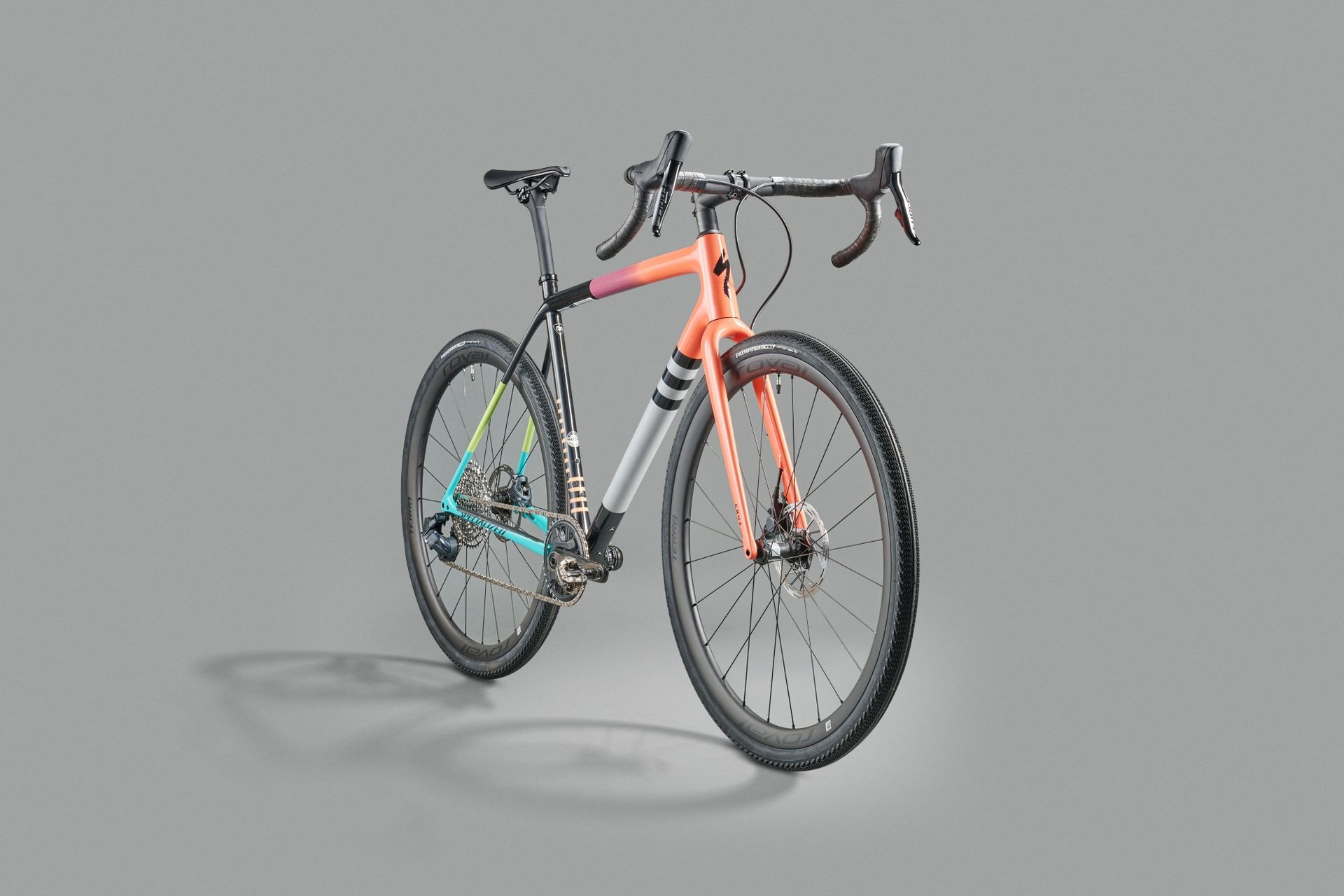 Specialized Crux Pro gravel bike
Specialized Crux Pro gravel bike
Image: The Specialized Crux Pro, stripped back and lightweight, ready to tackle any race with agility.
9. Specialized Crux Pro: The Featherweight Racer
A lightweight racer that blurs the lines between cyclocross and gravel, emphasizing speed and agility.
Read our Expert Review
The Specialized Crux Pro is designed for riders who prioritize lightweight performance and responsive handling above all else. Positioned as a more accessible option compared to the S-Works Crux, the Crux Pro remains exceptionally light and shares the same responsive geometry as its top-spec sibling. This combination results in lightning-fast acceleration and agile handling, making it a top choice among good gravel bikes for racers and speed-focused riders.
The Crux Pro’s lightweight frameset and geometry lend themselves to a ride that excels in speed and responsiveness. However, the stock 38mm tires can result in a somewhat jittery ride on rougher surfaces. To enhance comfort and traction, riders have the option to increase tire volume up to 2.1″ 650b tires. The round seatpost also allows for the installation of a dropper or suspension seatpost, further increasing its versatility.
Testers concluded that the Crux Pro perfectly fits riders seeking agile performance on gravel, with the capability to efficiently put down power for outright speed. Its lightweight design and responsive handling make it particularly well-suited for gravel races and fast-paced gravel riding.
Key Specifications:
- Frame: Crux FACT 10r Carbon
- Fork: FACT Carbon
- Groupset: SRAM Force AXS
- Wheels: Roval Terra CL
- Tyres: Pathfinder Pro 38mm
- Weight: 7.4kg
Reasons to Buy:
- Extremely lightweight and responsive frameset, maximizing efficiency and speed.
- Agile and fast ride quality, ideal for racing and performance-oriented riding.
- Clearance for up to 2.1″ 650b tires, increasing versatility for varied terrains.
Reasons to Avoid:
- Can feel jittery on rougher surfaces with the specced 38mm tires.
Who is this bike for? The Specialized Crux Pro is designed for gravel racers and riders who prioritize speed and lightweight performance. It’s a good gravel bike for those who want a fast, agile, and responsive machine for competitive gravel events or spirited rides, where every gram and watt counts.
Best Custom Build Option for a Good Gravel Bike
Image: Alexey Vermeulen’s custom-built Enve MOG, showcasing its premium components and tailored design.
10. Enve MOG: The Ultimate Custom Gravel Platform
The best gravel bike if you’re looking to create a truly personalized and high-performance machine.
Read our Expert Review
Enve has established a reputation for producing exceptional quality and high-performance cycling components, many of which are manufactured in the USA. The MOG marks Enve’s second foray into complete bikes, following the acclaimed Melee road bike launched in 2022. For riders seeking a premium, fully customizable gravel bike experience, the Enve MOG is among the good gravel bikes that offer unparalleled personalization.
The MOG incorporates all the desirable features of modern gravel bikes, including generous tire clearance, frame storage, and numerous mounting points. While the frame kit price of £5500/$5500 might seem high, it represents good value considering Enve’s reputation for design, engineering, and quality. The kit includes a frame, fork, headset, stem, handlebar, and seatpost, aligning in price with brands like Trek and Specialized despite Enve’s smaller scale production.
The MOG truly excels on dirt. Testers found it strikes an excellent balance between stiffness and comfort, maintaining speed without sacrificing rider comfort. Its slack geometry inspires confidence on descents, a trait particularly appealing to bikepackers and adventure riders.
Key Specifications:
- Frame: ENVE M.O.D Carbon
- Fork: ENVE M.O.D Carbon
- Frame Weight: 950g
- Frame Kit Includes: Frame, fork, handlebar, stem, headset, and seatpost
Reasons to Buy:
- Well-balanced geometry, providing a blend of efficiency and stability.
- Lightweight without compromising durability, ensuring performance and longevity.
- Extensive mounts and downtube storage, enhancing practicality for adventure riding.
- Threaded bottom bracket and round seat tube, appealing to riders who value serviceability and customization.
- Generous tire clearance, accommodating a wide range of tire sizes.
Reasons to Avoid:
- Chassis-only option; no complete bike builds are offered, requiring a custom build.
- Engineered around 700c wheels only, which may not suit all riders’ preferences.
- Lack of geometry adjustment options.
Who is this bike for? The Enve MOG is tailored for discerning riders who seek a top-tier, highly customizable gravel bike platform. It’s a good gravel bike choice for those who value premium components, personalized builds, and a high-performance ride experience, and are willing to invest in a chassis-only option to create their dream gravel bike.
Gravel Bikes: All You Need to Know Before You Ride
What Exactly Are Gravel Bikes?
Gravel bikes are more than just drop-bar bikes; they are a category defined by their versatility and adaptability. While traditionally featuring drop handlebars, some brands are now exploring flat bar gravel bike versions, further broadening their appeal. In essence, gravel bikes are designed to confidently transition from paved roads to more adventurous terrains whenever the rider desires.
Born from an adventurous spirit, the best gravel bikes bridge the gap between endurance road bikes, cyclocross bikes, and even incorporate elements from hardtail mountain bikes. They offer more agility on paved roads compared to mountain bikes with wide, knobby tires, while providing greater confidence and capability on rough surfaces compared to road bikes with slick tires.
Key characteristics of good gravel bikes include wider tires, often ranging from 35c to 50c or even wider, on either 700c or 650b wheels, providing enhanced traction and comfort. They also feature disc brakes as standard for reliable stopping power in all conditions. Mounting points for bottle cages, pannier racks, and extra storage are common, along with fender/mudguard compatibility, increasing their practicality for various uses.
Achieving the right bike fit is crucial, regardless of gender. While “women’s specific” models often offer smaller frame sizes and touchpoint adjustments like wider saddles and narrower handlebars, it’s essential to find a bike that fits your individual needs. For those interested in women’s specific options, resources like our guide to the best women’s gravel bikes for off-road adventures can be helpful.
For budget-conscious riders, our guide to the best budget gravel bikes under £1,000/$1500 highlights excellent value options that maintain similar handling characteristics to higher-end models but with more economical components.
The crossover nature of gravel riding also extends to gear. Choosing between Lycra and more casual cycling attire becomes a consideration. Our guide on the best gravel bike clothing helps navigate the apparel choices for gravel adventures.
Are Gravel Bikes Efficient on Paved Roads?
Compared to dedicated road bikes, gravel bikes typically feature wider tires and lower gear ratios. These wider gear ranges are beneficial for tackling loose surfaces, steep climbs, and carrying bikepacking bags during multi-day expeditions. The lower gears help maintain cadence and efficiency in challenging conditions.
Generally, good gravel bikes also have a lower bottom bracket than cyclocross bikes, enhancing stability, particularly on rocky, rooty, and uneven terrain. For a detailed understanding of the distinctions, our guide on gravel vs cyclocross bikes provides valuable insights.
For riders seeking to venture off-road but concerned about keeping pace, electric gravel bikes are an appealing option. Electric gravel bikes combine all-terrain capability and stability with the added assistance of electric power, making challenging rides more accessible.
The Popularity of Gravel and Adventure Bikes
The surge in popularity of gravel and adventure bikes stems from their ability to unlock new riding possibilities. If you’ve ever ridden your road bike and noticed enticing unpaved roads, fire trails, or singletrack, but hesitated to explore them on your road bike, a gravel bike is your answer.
Gravel bikes bridge the gap between on-road efficiency and off-road capability. They blend design features from road and cyclocross bikes, while incorporating elements of mountain bike technology. When selecting your first gravel bike, expect disc brakes and clearance for wider tires as standard.
While cyclocross bikes are designed for short, intense, muddy races, gravel and adventure bikes cater to longer, unpaved rides. The gravel category includes race-oriented builds for gravel competitions, as well as adventure bikes with increased tire clearance and mounts for luggage, suitable for more remote and extended journeys.
Frame and Fork Materials: What Matters?
Like road bikes, gravel bike frames can be constructed from carbon, aluminum, titanium, or steel. Carbon and aluminum are the most prevalent materials, and all bikes in this guide utilize one of these. Carbon frames are typically lighter and more expensive, while aluminum frames offer affordability with a slight weight penalty. For a similar price, aluminum-framed bikes often feature higher-spec components compared to carbon counterparts.
Carbon fiber’s advantage lies in its tunable properties. It can be strategically added for strength and stiffness where needed, and removed to reduce weight and fine-tune compliance. This allows for optimized frame design tailored to gravel riding demands.
Titanium gravel bikes are less common but prized for their ride quality, often described as more “lively” than carbon or aluminum. Titanium offers a blend of low weight, high strength, and excellent ride feel.
High-end steel frames can mimic titanium’s ride characteristics, albeit with a slight weight increase. Lower-end steel frames are often chosen for their durability and potential for repair, offering a robust alternative to aluminum.
Regardless of frame material, most good gravel bikes feature carbon forks. Carbon forks allow for tuned layup to provide vibration damping, crucial for front-end comfort on varied terrains.
Gravel Bike Geometry vs. Road Bikes
Stability and confident handling are paramount for off-road riding. Compared to road bikes, gravel bikes typically feature a longer wheelbase, slacker head tube angle, and lower bottom bracket. These geometric adjustments enhance stability on technical terrain and steeper descents.
The rider position on gravel bikes is generally more upright than on road bikes. This upright posture enhances comfort for long rides and allows for greater rider movement to navigate off-road obstacles effectively.
 Gravel bike fork
Gravel bike fork
Image: A close-up of a gravel bike fork, highlighting the 12mm thru-axle and hydraulic disc brake, showcasing modern gravel bike technology.
Specialized Features of Gravel Bikes
Thru-axles and disc brakes have become standard features on gravel bikes, adopted from mountain biking technology. While suspension is less common, it is increasingly found on some gravel models.
12mm thru-axles are the norm, improving disc brake alignment and enhancing wheel stiffness. Rear-axle spacing for disc brake wheels is typically 142mm (thru-axle) or occasionally 148mm Boost spacing for stronger wheelsets.
Adventure and utility-focused gravel frames often include mounts for racks and fenders, expanding their usability for commuting and year-round riding. At the more adventure-oriented end, fork leg mounts and additional frame mounts are becoming increasingly common for enhanced luggage-carrying capacity.
Gravel Bike and Adventure Bike Components
A wide array of specialized gravel bike components enhances the gravel riding experience, differentiating them from standard road bike components. Here are key component considerations when choosing good gravel bikes:
Best Tires for Gravel and Adventure Bikes
Gravel and adventure bikes accommodate a broad range of tire widths, from 28c to 47c and beyond, including inch-based measurements for 650b wheel setups.
The best gravel bike tires significantly impact ride quality. Tread patterns vary widely, from aggressive treads for muddy conditions to low-rolling-resistance patterns for mixed surfaces.
Upgrading tires is one of the best value gravel bike upgrades. Converting to tubeless setups also enhances comfort and reduces puncture risks.
In regions with varied conditions, like the UK, a more aggressive tread pattern is beneficial for maintaining grip in wet mud and loose dirt, albeit potentially sacrificing some on-road speed. However, in areas like the US, gravel roads range from smooth, packed dirt to rough limestone, requiring different tire choices.
Experimentation is key to finding the right tires for your typical riding terrain. Consider changing tires between seasons to optimize width and tread for summer and winter conditions.
Most gravel bikes are specced with tubeless or tubeless-ready tires and rims, easily convertible to tubeless setups. Tubeless systems use sealant to self-seal punctures, a significant advantage for off-road riding.
While sealant handles many punctures, carrying tubeless tire plugs, a spare tube, and a full tubeless repair kit is advisable for more significant tire damage.
Gearing Options for Gravel and Adventure Bikes
Gravel and adventure bikes are designed for both on and off-road riding, necessitating a wide gear range. This range ensures efficiency and speed on paved roads, as well as sufficient gears for challenging off-road terrain.
The choice between 1x (single chainring) and 2x (double chainring) front drivetrain setups is largely based on rider preference. 1x setups offer simplicity and increased tire clearance, but can result in larger jumps between gears, although modern 12 and 13-speed groupsets mitigate this.
2x chainrings provide more gear options, preferred by riders who spend more time on smoother surfaces or roads. They offer a broader overall range with smaller increments between gears.
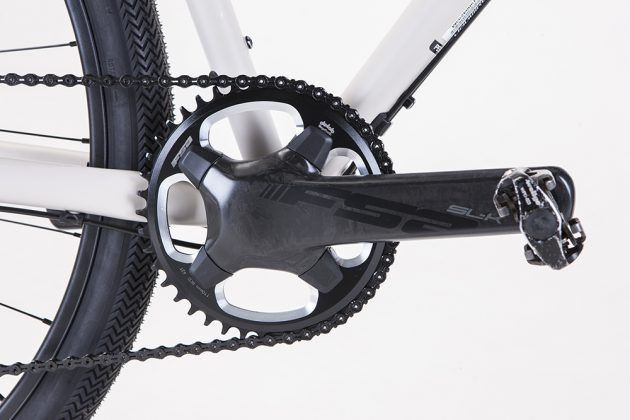 Best gravel and adventure bikes
Best gravel and adventure bikes
Image: A 1X drivetrain on a gravel bike, highlighting its simplicity and ample tire clearance.
Good gravel bikes often feature drivetrains with sub-1:1 ratios for off-road climbing and load carrying. This can be achieved with 1x systems like SRAM XPLR with cassettes up to 42 teeth or more, or 2x supercompact chainsets with 48/32 or 46/30 chainrings paired with 11-32 or 11-34 cassettes. “Mullet builds,” combining road chainsets with MTB cassettes and rear derailleurs, offer ultra-low gearing, sometimes as low as 38x52t.
Our guide to gravel bike gearing provides further details on gearing choices.
Pedal Choices for Gravel and Adventure Bikes
Pedal selection is personal and depends on riding style. Our guide to the best gravel bike pedals offers advice.
For predominantly road and well-maintained path riding, road cycling shoes, clipless pedals, and cleats can be suitable.
More demanding off-road riding often requires dismounting and walking or putting a foot down for stability. In such cases, gravel bike shoes and two-sided gravel bike pedals with grippy treaded soles and recessed cleats (derived from MTB systems) are often preferred for walkability and easier pedal engagement.
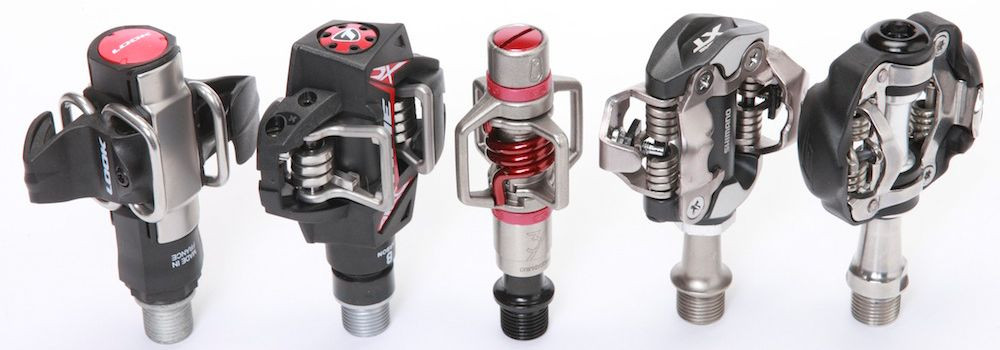 Best gravel and adventure bikes
Best gravel and adventure bikes
Image: Mountain bike style pedals on a gravel bike, emphasizing walkability and ease of use in varied terrains.
Expected Components on Good Gravel Bikes
Adventure and gravel bikes utilize disc brakes for superior modulation and consistent stopping power in all conditions. Disc brakes also extend wheel rim lifespan compared to rim brakes in off-road environments.
Higher-end models typically feature hydraulic disc brakes, while budget bikes often use mechanical calipers. Shimano GRX and SRAM gravel-specific groupsets predominantly offer hydraulic disc options, making them the common choice. Mechanical disc brakes are occasionally found on adventure bikes, favored by long-distance riders for simpler maintenance and repair in remote locations.
Handlebar selection is another important consideration. Our guide to the best gravel bike handlebars provides detailed information.
Flared handlebars are widely considered a beneficial upgrade, providing increased stability in the drops for rough terrain and descents. Wider flares also facilitate handlebar bag use while maintaining hand access to the drops and brakes. Raised handlebars, such as the Specialized Hover Bar, offer more front wheel clearance for smaller riders and a more upright riding position.
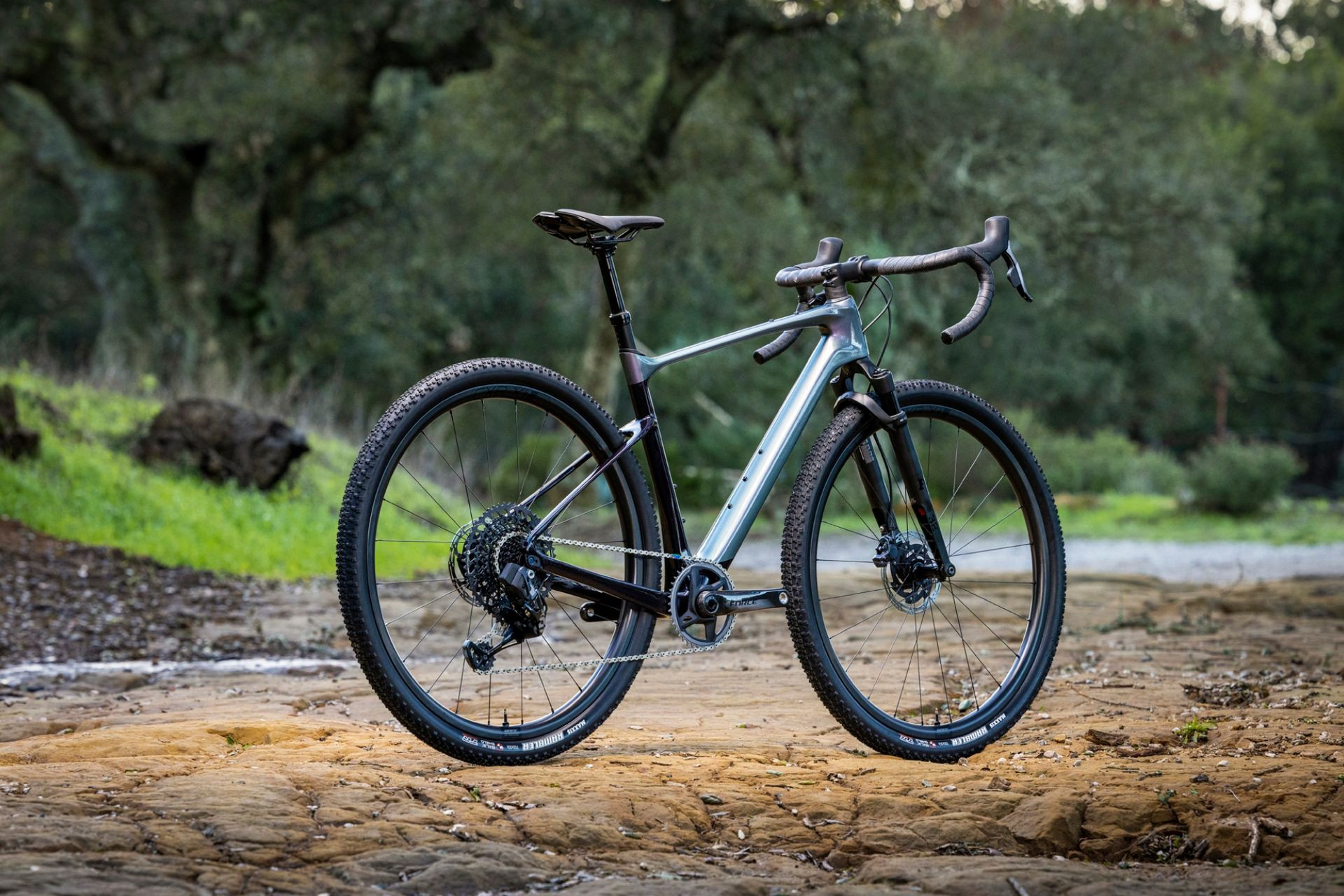 The all-new Giant Revolt X Advanced Pro 0 in full with brown soil under the wheels and green trees in the background
The all-new Giant Revolt X Advanced Pro 0 in full with brown soil under the wheels and green trees in the background
Image: The Giant Revolt X, equipped with a dropper post and suspension fork, showcasing advanced features on modern gravel bikes.
Short-travel suspension forks like the RockShox Rudy Ultimate XPLR and the Cannondale Lefty Oliver are increasingly being incorporated into gravel bike designs, enhancing comfort and control on rougher terrains.
Our Testing Methodology
At Cycling Weekly, our dedicated team of testers rigorously reviews a wide range of cycling products. They conduct objective, real-world tests, using products daily in diverse conditions to provide unbiased assessments of performance.
Our testers possess extensive experience, enabling them to effectively compare products, identify strengths and weaknesses, and deliver honest, insightful reviews.
Gravel bike testing involves logging significant miles across varied terrains. Routes range from technical mountain bike trails to multi-day bikepacking adventures and everything in between. We ensure bikes are also tested on paved roads, recognizing that many riders use gravel bikes for commuting, winter riding, and rides that include both tarmac and gravel sections.
During testing, we evaluate bikes across numerous factors, including comfort, handling, suitability for various gravel terrains and bikepacking, component quality and durability, and overall value for money. This comprehensive testing process ensures our recommendations for good gravel bikes are reliable and informative.

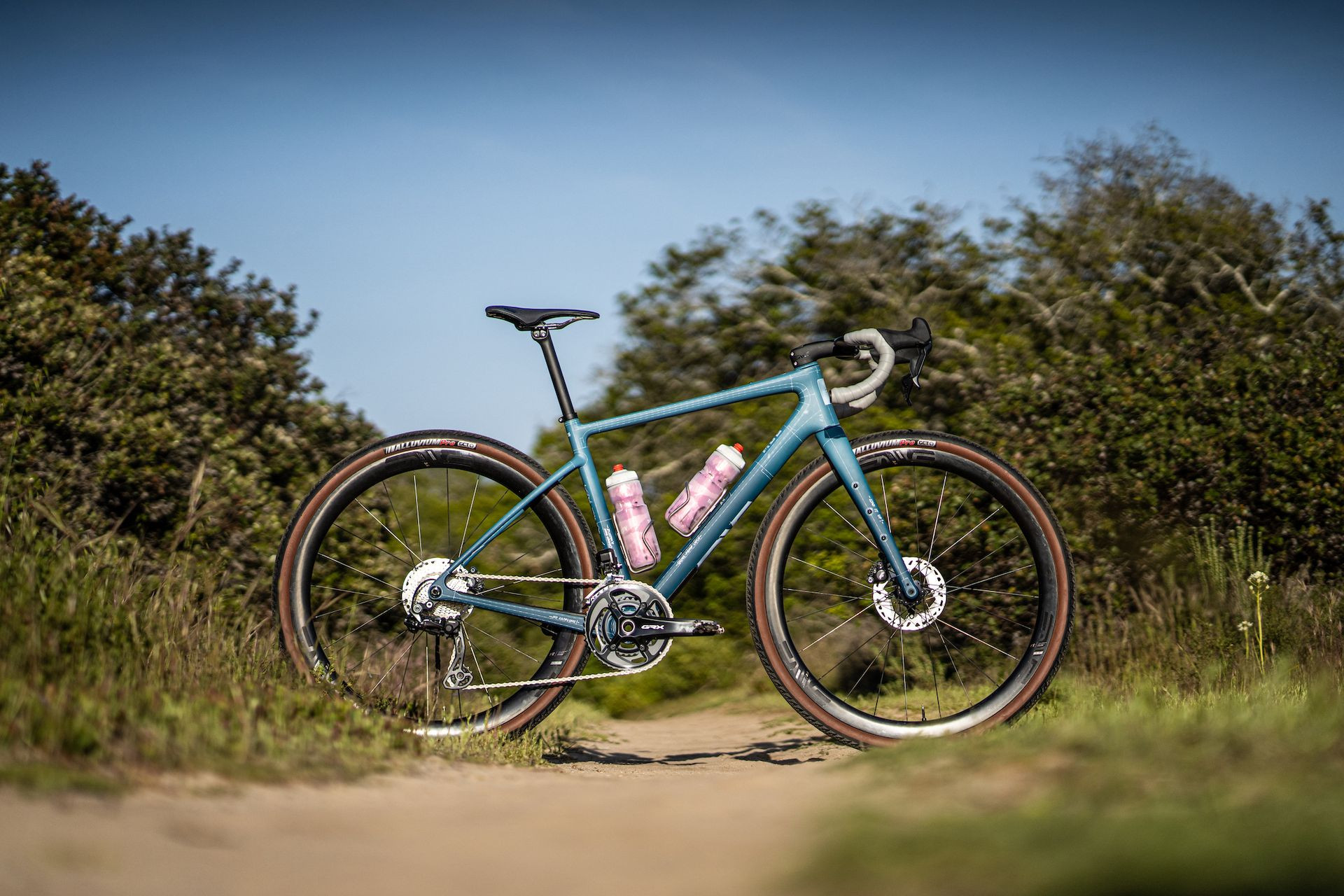 Alexey Vermeulen
Alexey Vermeulen